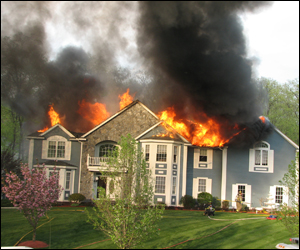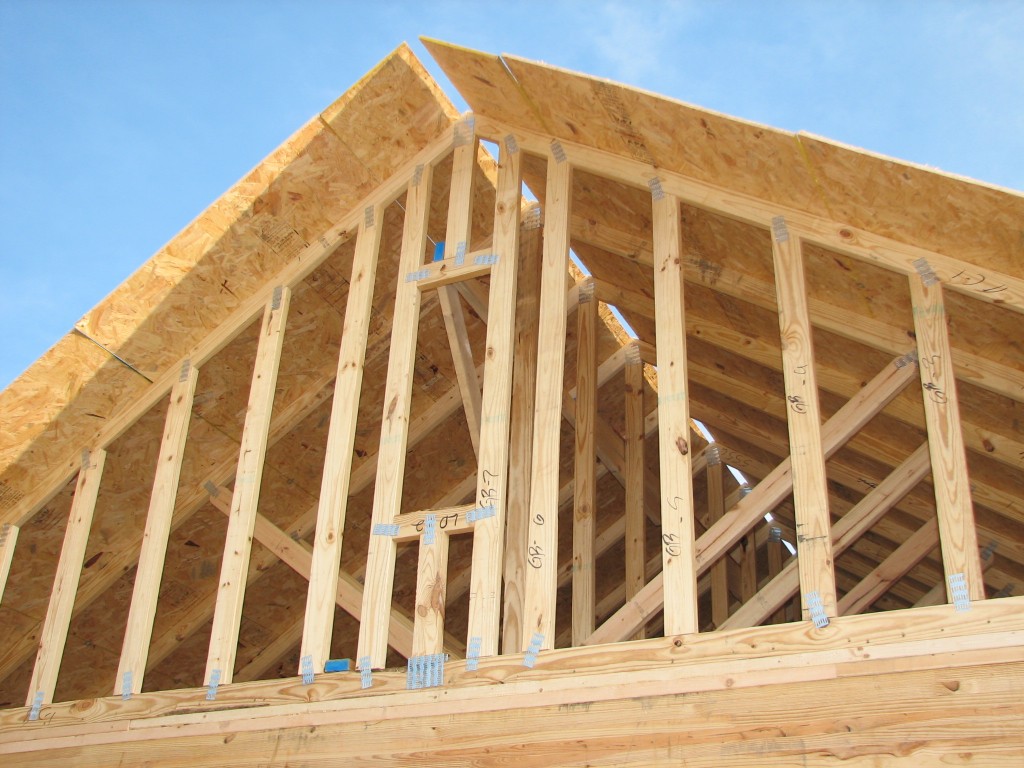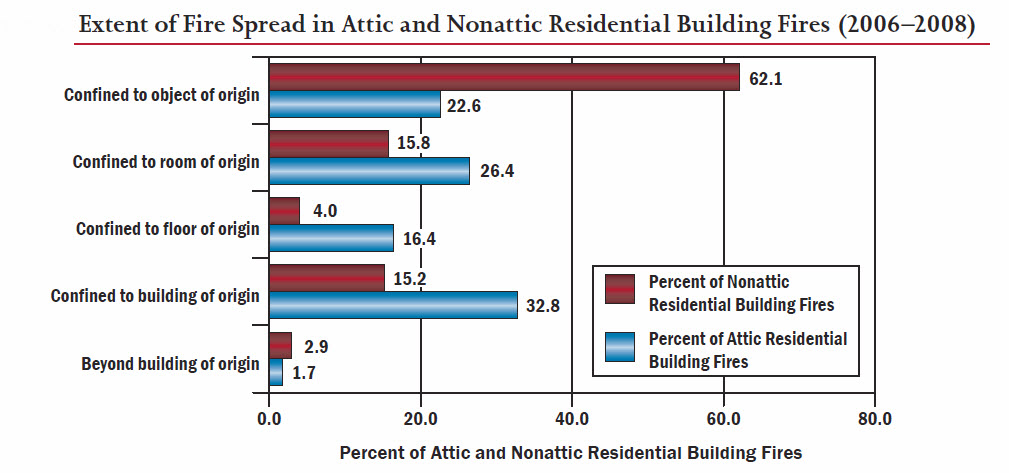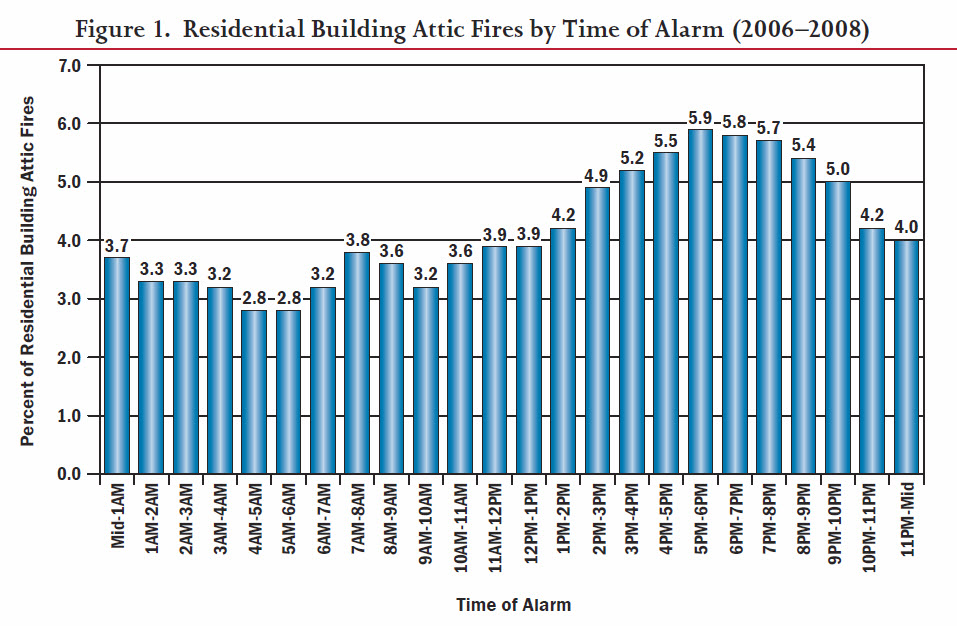Attic Fires in Residential Buildings Report
By Christopher J. Naum, SFPE on Jan 14, 2011 with Comments 0
According to the report:
- An estimated 10,000 attic fires in residential buildings occur annually in the United States, resulting in an estimated average of 30 deaths, 125 injuries, and $477 million in property damage.
- The leading cause of all attic fires is electrical malfunction (43 percent).
- The most common heat source is electrical arcing (37 percent).
- Almost all residential building attic fires are nonconfined (99 percent) and a third of all residential building attic fires spread to involve the entire building.
- Ninety percent of residential attic fires occur in one- and two-family residential buildings.
- Residential building attic fires are most prevalent in December (12 percent) and January (11 percent) and peak between the hours of 4 and 8 p.m.
Attic Fires in Residential Buildings is part of the USFA’s Topical Fire Report Series. Topical reports explore facets of the U.S. fire problem that USFA shares with fire departments and first responders around the country to help them keep their communities safe. Each report briefly addresses the nature of the specific fire or fire-related topic, highlights important findings from the data, and may suggest other resources to consider for further information. Also included are recent examples of fire incidents that demonstrate some of the issues addressed in the report or that put the report topic in context.
- The location of the attic provides many difficulties for firefighters when extinguishing the fire. Careful planning goes into deciding the best way to extinguish an attic fire.
- Firefighters must decide whether to fight the fire from above or below, both of which present many difficulties. In both instances, firefighters have to consider that roofs or ceilings may collapse. The large amounts of water used to extinguish the blaze causes the insulation and wood beams to become saturated. Firefighters have been known to fall through the roof into the attic or through the attic into the floor(s) below.
- In addition, not all attics have flooring. If firefighters enter the attic, they must be careful not to step outside the flooring area since they risk falling through the ceiling.
- The construction of the attic is another area that presents difficulties to firefighters. Older and newer homes are constructed using different techniques. Older homes tend to have roofs that are framed with larger sized lumber, 2 by 6 inches.
- These attics usually provide a continuous attic space with a peak as high as 8 feet. Conventional attics are not generally compartmentalized like many new home attics. Newer home attics typically employ a truss-framed construction that involves smaller wood boards placed in “A” (or triangular) shapes throughout the attic from the ceiling to the floor.
- This construction can be difficult for a firefighter to navigate.
- In addition, wood members in truss-framed construction can conceal fires and make extinguishing the fire more difficult. In large new homes and multifamily dwellings, many attics are constructed with fire stops, which can be as substantial as 2-hour, fire-resistance rated walls.
- These help limit the spread of the fire from the attic to surrounding areas.
Filed Under: Anatomy of Buildings • Buildings • Documents • Research Hub



























